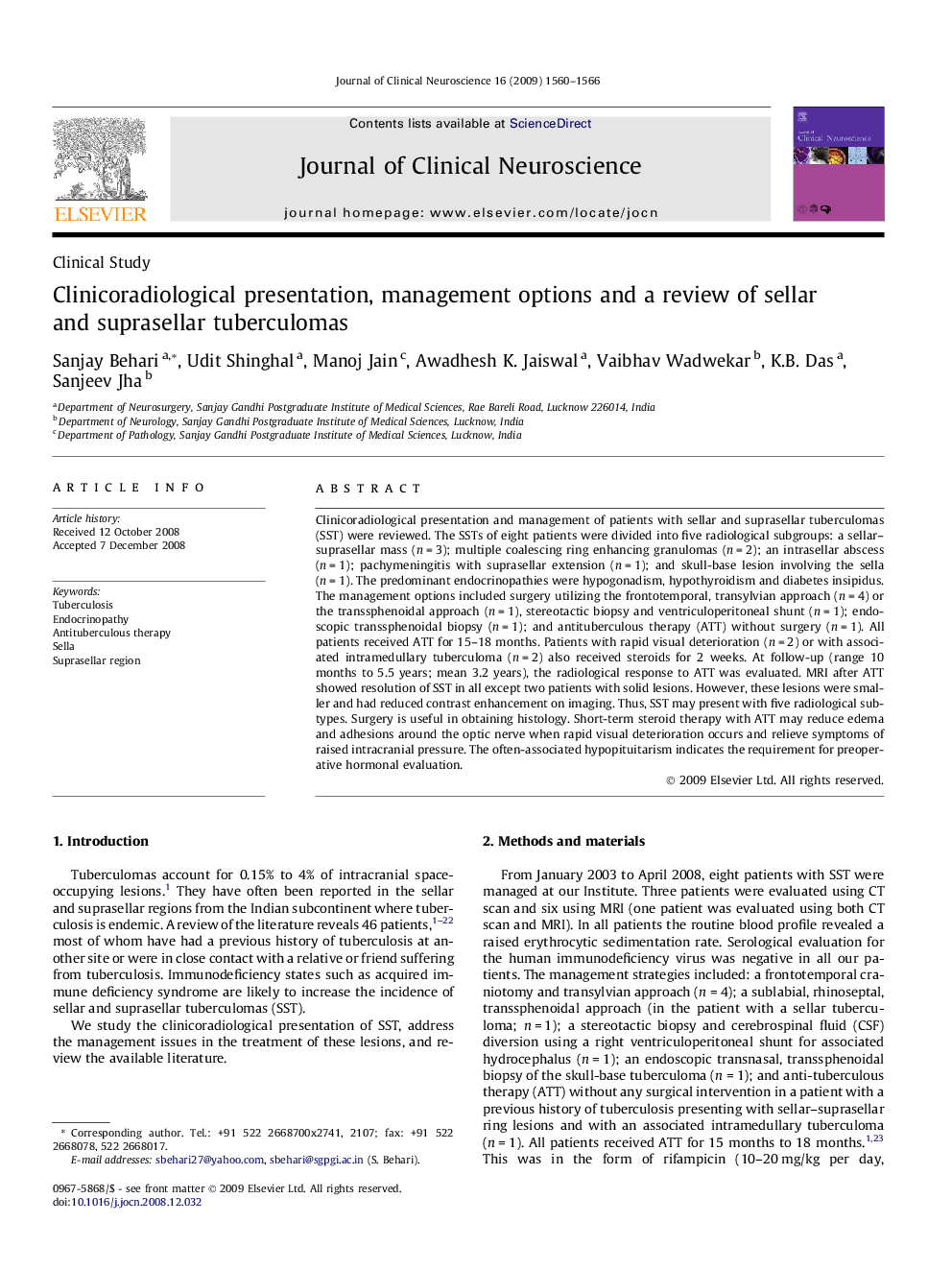| Article ID | Journal | Published Year | Pages | File Type |
|---|---|---|---|---|
| 3063204 | Journal of Clinical Neuroscience | 2009 | 7 Pages |
Clinicoradiological presentation and management of patients with sellar and suprasellar tuberculomas (SST) were reviewed. The SSTs of eight patients were divided into five radiological subgroups: a sellar–suprasellar mass (n = 3); multiple coalescing ring enhancing granulomas (n = 2); an intrasellar abscess (n = 1); pachymeningitis with suprasellar extension (n = 1); and skull-base lesion involving the sella (n = 1). The predominant endocrinopathies were hypogonadism, hypothyroidism and diabetes insipidus. The management options included surgery utilizing the frontotemporal, transylvian approach (n = 4) or the transsphenoidal approach (n = 1), stereotactic biopsy and ventriculoperitoneal shunt (n = 1); endoscopic transsphenoidal biopsy (n = 1); and antituberculous therapy (ATT) without surgery (n = 1). All patients received ATT for 15–18 months. Patients with rapid visual deterioration (n = 2) or with associated intramedullary tuberculoma (n = 2) also received steroids for 2 weeks. At follow-up (range 10 months to 5.5 years; mean 3.2 years), the radiological response to ATT was evaluated. MRI after ATT showed resolution of SST in all except two patients with solid lesions. However, these lesions were smaller and had reduced contrast enhancement on imaging. Thus, SST may present with five radiological subtypes. Surgery is useful in obtaining histology. Short-term steroid therapy with ATT may reduce edema and adhesions around the optic nerve when rapid visual deterioration occurs and relieve symptoms of raised intracranial pressure. The often-associated hypopituitarism indicates the requirement for preoperative hormonal evaluation.
